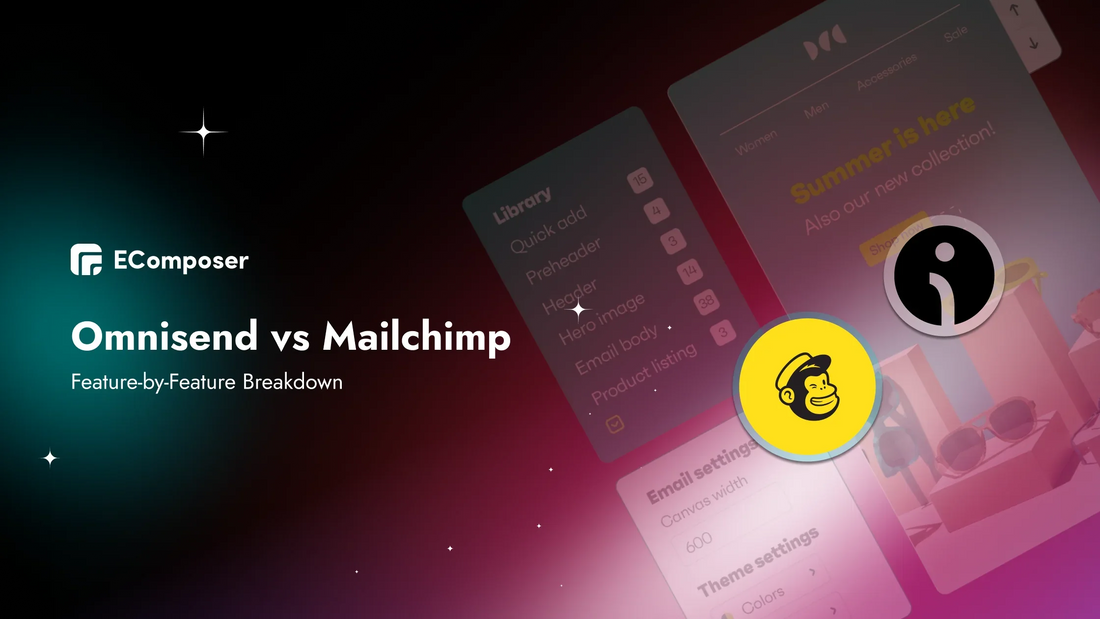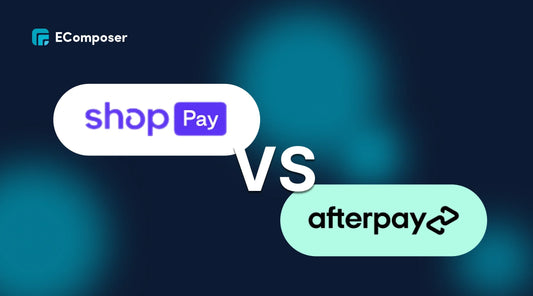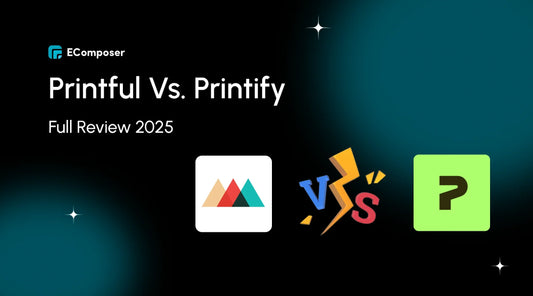Omnisend vs Mailchimp Comparison: Which is the better?

Table Of Contents
Omnisend and Mailchimp are two well-known choices. They both have many tools that can help you reach your marketing objectives. But which platform is best for your company?
This in-depth article will compare Omnisend and Mailchimp's main features, helping you understand their pros and cons. If you read this whole blog, you should know which site will work best for your needs and goals.
What Is Omnisend?
Omnisend is an all-in-one marketing tool for all channels built to help eCommerce grow. Businesses can engage customers more unitedly when they combine email, SMS, push alerts, and other tools into one powerful one. Omnisend is a great option for popular email marketing platforms like Mailchimp because it has powerful automation tools and low prices.

Omnisend's website.
What Is Mailchimp?
MailChimp is a go-to tool for those just starting out in email marketing. Many people unfamiliar with email marketing have taken advantage of its free plan.
Consequently, Mailchimp has faced criticism for contributing to spam levels. While offering a broad range of features, Mailchimp's premium options are often costly and better suited to large enterprises than small businesses.

Mailchimp's website.
A Quick Comparison Omnisend vs Mailchimp
|
Feature |
Omnisend |
Mailchimp |
Winner |
|
Ease of Use |
It is slightly less intuitive but offers more customization. |
More user-friendly interface, especially for beginners. |
Mailchimp |
|
Email Builder |
Strong focus on ecommerce, with advanced customization options. |
More general-purpose, with a broader range of templates. |
Omnisend |
|
Email Templates |
Modern, professional designs with solid integration. |
More basic templates, with limited options on the free plan. |
Omnisend |
|
Landing Page Builder |
Flexible and customizable, with strong integration. |
Good range of pre-built templates, easier to use for beginners. |
Tie |
|
Registration Forms |
User-friendly and flexible builder. |
More complex interface with limited template options. |
Omnisend |
|
Email Automation |
Advanced automation features are available on the free plan. |
Powerful automation, but locked behind paid plans. |
Omnisend |
|
A/B Testing |
Comprehensive A/B testing options. |
Solid A/B testing, with multivariate testing on higher tiers. |
Tie |
|
Deliverability |
Lower deliverability rates. |
Higher deliverability rates. |
Mailchimp |
|
Segmentation |
Advanced segmentation options with unlimited segments. |
Good segmentation options, but less flexible. |
Omnisend |
|
Reporting & Analytics |
Focused on ecommerce metrics, easy-to-use dashboard. |
A broader range of data with AI-powered insights. |
Depends |
|
Integrations |
Strong focus on ecommerce platforms, with limited third-party integrations. |
A wide range of integrations are available. |
Mailchimp |
|
Customer Support |
Excellent customer support, including free plan users. |
Good customer support, but less accessible on the free plan. |
Omnisend |
|
Pricing |
A more generous free plan generally offers more emails for your money. |
More restrictive free plan, pricing based on total contacts (including unsubscribed). |
Omnisend |
Omnisend vs Mailchimp detailed comparison
With many alternatives available, selecting your company's best email marketing platform may take time and effort. Two well-liked options, each with its own advantages and disadvantages, are Omnisend and Mailchimp. Now, let's compare each feature in detail to help you choose.
1. Ease of Use
Both Omnisend and Mailchimp have dashboards that are easy to navigate. We found them both quite user-friendly.
That said, we did notice a few things. Omnisend's layout feels a bit more scattered. Finding specific features, especially landing pages, took us a little while. Plus, connecting your store before exploring can be a bit restrictive.

Omnisend's horizontal menu.
Mailchimp's dashboard feels a bit more organized to us. We liked how they've arranged everything. And the search bar is a real time-saver! We also noticed that Mailchimp's menu is vertical, which we prefer to Omnisend's horizontal one.

Mailchimp's vertical menu.
Overall, we found Mailchimp's dashboard a little easier to get started with.
2. Drag-And-Drop Email Builder
Both Omnisend and Mailchimp have drag-and-drop email builders, which is excellent. But when building emails specifically for online stores, Omnisend shines. It has these pre-designed blocks for things like product carousels that are super helpful. Plus, you can customize everything to match your brand. We love that you can even tweak the code if you feel adventurous.
What's cool about Omnisend is that even if you're just starting out, you can access all the fancy features. There's no need to upgrade to use the best parts of the builder.

Omnisend's builder editor.
Mailchimp's builder is okay, too, but it feels a bit more general purpose. Their templates are lovely, but there aren't as many options specifically for online stores. It's pretty easy to use, but you might hit some limits if you want to get creative. And to use all the cool stuff, you have to pay for one of their paid plans.

Mailchimp's builder editor.
So, if you're running an online store, Omnisend's builder feels like it was made with you in mind.
3. Email Templates
Both Mailchimp and Omnisend offer email templates, but there's a clear difference in quality and accessibility. Omnisend offers 250+ modern and professional templates, giving you a head start on creating stylish campaigns.

Omnisend's library templates.
On the other hand, Mailchimp's templates are more basic and limited, especially if you're on their free plan.

Mailchimp's library templates.
What distinguishes Omnisend is its ability to connect with your online shop effortlessly. You can automatically bring in goods, recommend things that clients may enjoy, and even offer discount coupons without lifting a finger.
Another thing we appreciate about Omnisend is the ability to save individual design blocks. It's like having your library of go-to elements. Mailchimp doesn't offer this, which can be frustrating when trying to maintain a consistent look and feel across your campaigns.
4. Landing Builder Page
Both Omnisend and Mailchimp have tools for creating landing pages to capture leads. Mailchimp offers a variety of pre-built templates, which is handy if you need something quick. You can also pull product images directly into your landing pages from your online store.

Mailchimp landing builder page drag-and-drop editor.
Omnisend takes a slightly different approach. You have more flexibility to create custom landing pages that perfectly match your brand. We like that you can easily swap out content without messing up the overall design. Plus, being able to change the look of your page when sharing it on Facebook is a clever touch.

Omnisend landing builder page editor.
So, Mailchimp's templates might be a good starting point if you're looking for something simple. But if you want to create unique landing pages that convert, Omnisend gives you more options.
5. Registration Forms
Building sign-up forms is a crucial step in growing your email list, and both Omnisend and Mailchimp offer tools to help you do that. Integrating forms into your website should be a breeze, and both platforms make this pretty straightforward.
We think Omnisend's form builder is much more user-friendly. They offer a good selection of templates, and the process of creating and customizing forms is smooth.

Omnisend's form builder.
However, Mailchimp has chosen a more complicated method. It can be hard to keep track of all the different ways to make forms. Plus, they don't have many design choices, especially when it comes to popups. We didn't think it was as easy to use or effective.

Mailchimp's form builder
Overall, Omnisend wins this round for us. Their form builder is more straightforward, flexible, and easy to use.
6. Email Automation
Any business may benefit from email automation; Omnisend and Mailchimp provide tools that let you design effective campaigns. Both systems include easy-to-use visual builders that enable automatic operation settings.
However, there's a significant difference in accessibility. Mailchimp locks away its advanced automation features behind paid plans. This is a big deal because automation is crucial for nurturing leads and boosting sales.

Mailchimp's email automation flow.
Omnisend, on the other hand, gives you access to powerful automation tools right from the start. You can create complex workflows, experiment with channels like SMS and push notifications, and even run A/B tests to optimize your campaigns. It's like having a marketing assistant working for you 24/7.

Omnisend's workflows feature.
Considering automation's value, Omnisend has the edge in this area.
7. A/B Testing
A/B testing, available in Omnisend and Mailchimp, is a great way to improve your ads. You can try out different subject lines, materials, and pictures to find out what your audience likes best.
We like that Omnisend gives you a lot of flexibility in choosing what to test and how long to run the test. It's like taking a scientific approach to your email marketing.

Omnisend's sample A/B testing.
Mailchimp also has solid A/B testing features, and we appreciate that they offer multivariate testing on their higher-tier plans. This means you can test many elements simultaneously, saving you time.
8. Deliverability Rates
Deliverability is a huge deal in email marketing. You don't want all your hard work to go to waste because your emails are in the spam folder.
We have closely monitored how well different email marketing systems send emails, and Mailchimp always does the best job. Email Tool Tester report has found that Mailchimp emails are much more likely to get to your users' inboxes than Omnisend emails.
|
Omnisend |
Mailchimp |
|
|
Average Deliverability Rate |
78.5% |
92.6% |
So, if landing in the inbox is your top priority, Mailchimp has the edge in this area.
9. Segmentation Feature
Organizing your email list into smaller groups based on things they have in common, like what they've bought or how they've responded to your emails, is a big deal. It's called division, and it helps you send more useful and important messages.
Both Omnisend and Mailchimp let you segment your audience based on what people buy, where they live, or how they've opened your emails.
However, Omnisend goes the extra mile with segmentation. They give you many options to create super-specific groups; you can even combine different criteria to create targeted segments.

Omnisend targeted segment feature.
Mailchimp's segmentation is okay, but it's not as flexible as Omnisend's. You can create useful segments, but you might want more options.

Mailchimp's segmentation feature.
So, if you want to get the most out of segmentation, Omnisend is the way to go.
10. Reporting & Analytics
It is crucial to know how well your marketing campaigns are doing, and you can find solutions to accomplish just that with MailChimp and Omnisend.
Mailchimp takes a more holistic approach, pulling data from various marketing tools to give you a big-picture view. It's like having a control center for all your marketing efforts. They also use AI to provide smart recommendations, which is nice.

Mailchimp report feature.
Omnisend focuses more on giving you a quick and easy overview of your campaigns, especially if you're running an online store. Their dashboard is clean and easy to understand, and you can quickly see how your emails, SMS messages, and push notifications are performing.

Omnisend report feature.
While we appreciate Mailchimp's big-picture approach, Omnisend focuses on key metrics and easy-to-read reports that are more practical for day-to-day decision-making.
11. Integrations
If you're using Shopify, you'll be happy to know that both Mailchimp and Omnisend integrate with it. Mailchimp shines when it comes to integrations, though. They have a huge marketplace with many apps so that you can connect almost anything to your email marketing.
Omnisend focuses mainly on e-commerce platforms, so it integrates with the most popular ones. But if you need something specific that is not on their list, you might need to use Zapier to connect it.
While Omnisend is excellent for e-commerce, Mailchimp's wider range of integrations gives it a slight edge.
12. Customer Support
Having good customer support is super important, especially when you're just starting. It can be frustrating when you get stuck and can't find the needed help.
We've noticed that Omnisend offers better support, especially for users on free plans. It's great to have someone to turn to when you have questions. Their support team is responsive and helpful.
Mailchimp's support is okay but not as readily available, especially if you're on the free plan. It can take a bit longer to get a response.
Overall, Omnisend wins points for having better customer support in our experience.
Pricing Breakdown Omnisend vs Mailchimp
|
Plan |
Omnisend |
Mailchimp |
|
Free |
Only get to 250 contacts, with a monthly cap of 500 emails. |
500 contacts, 1,000 emails/month |
|
500 - 1500 contacts |
$16 - $59/month |
$27/month - $350/month |
|
200,000+ subscribers |
Custom |
Custom |
Traditionally, both Omnisend and Mailchimp were known for their affordable pricing, making email marketing accessible to businesses of all sizes. However, things have changed.
Mailchimp has recently updated its pricing structure to include unsubscribed contacts in your contact count. This means you'll end up paying more if you have many people who've opted out. While they offer a pricing calculator to help you estimate costs, it's something to watch.
On the other hand, Omnisend still uses a more traditional pricing model based on active subscribers, which can be a cost-saver in the long run.
Both platforms offer free plans, but there's a big difference. Omnisend's free plan includes features such as A/B testing and automation, while Mailchimp's free plan is more limited and does not offer A/B testing or advanced automation options.
Both platforms offer a range of paid plans to suit different needs and budgets. However, Omnisend often provides more email sends for its money.
Ultimately, the best way to choose between the two is to carefully consider your needs, budget, and email list size.
Who Is Suitable for Omnisend?
We think Omnisend is an excellent fit for:
- Ecommerce businesses, because their focus on features specifically designed for online stores, such as product pickers and native discount codes, make it a strong choice for companies selling products online.
- Businesses are looking for advanced reporting and analytics because Omnisend's real-time reporting tools can provide valuable insights to help companies understand their audience and optimize their marketing efforts.
- Businesses that expect growth: While Mailchimp might be suitable for small businesses, Omnisend's focus on scalability makes it a better option for companies anticipating growth.
Omnisend is a tool that understands the unique challenges and possibilities of e-commerce and can help you if you own an online store.
Read more: Omnisend's review.
Who Is Suitable for Mailchimp?
In our opinion, Mailchimp is a good fit for:
- Small businesses: Because Mailchimp focuses on a broad range of users, it is often a good starting point for small businesses new to email marketing.
- Businesses with basic email marketing needs: If your email marketing strategy is relatively simple and doesn't require highly specialized ecommerce features, Mailchimp can be a suitable option.
Mailchimp is a strong option for small businesses searching for a feature-rich, all-purpose email marketing platform.
Read more:
- Omnisend vs. TinyEmail: Which Is The Better?
- Omnisend vs. Klaviyo: Which Is Better for Email Marketing?
Conclusion
The final decision between Omnisend and Mailchimp depends on your company's requirements. Both systems serve distinct user bases and provide proper functionality. You may choose by carefully weighing your target audience, your budget, and the necessary customization.
If you are looking for a platform that can grow with your business and features tailored to e-commerce, Omnisend could be a better fit. If you're looking for a platform that can handle many different tasks and still emphasize user experience, however, MailChimp could be a solid option.
Also, you can read more: Top Email Marketing Apps for Shopify to Get the Most Out of Your Campaign.
We encourage you to visit our other blog for more honest comparison reviews.




















